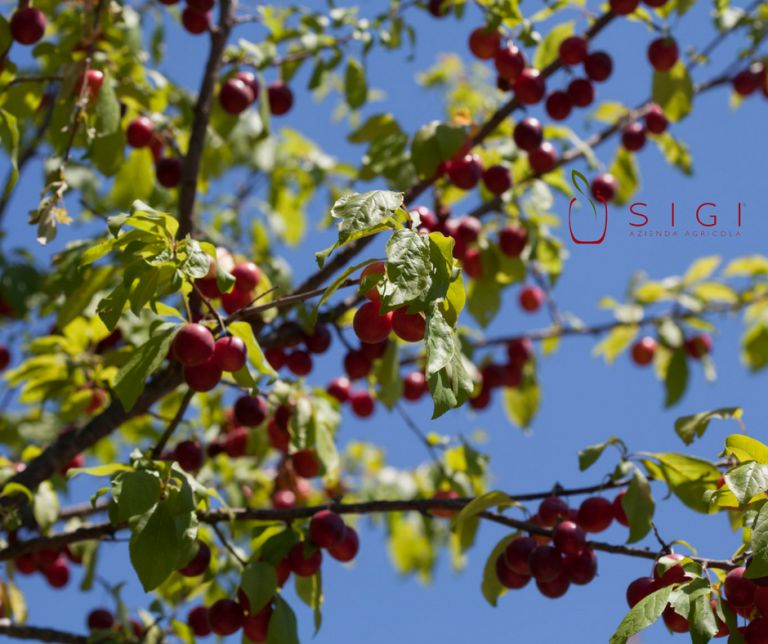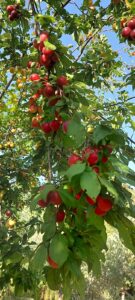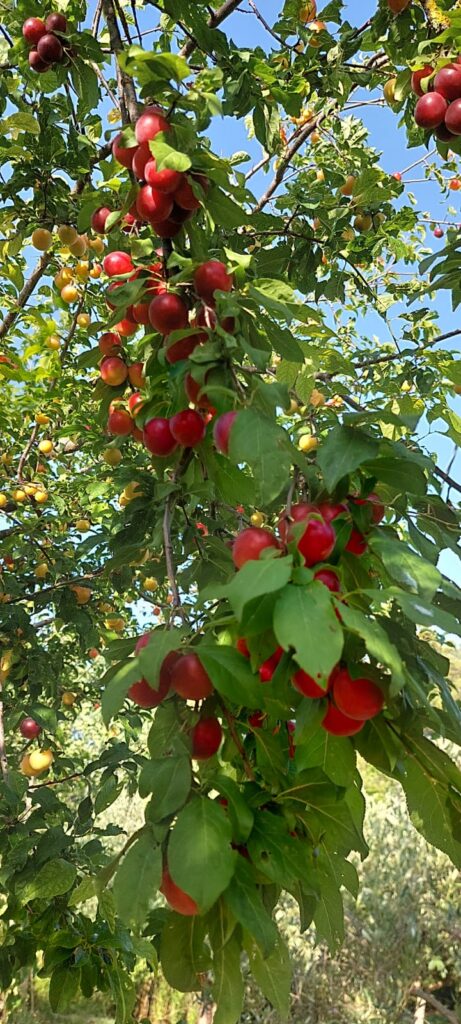WILD CHERRY PLUM TREE
In local dialect: “La Brugnoletta”
Prunus cerasifera Ehrh.
Rosaceae
🌳MIRABOLANO: THE WILD FRUIT WITH A SURPRISING FLAVOUR
The wild cherry plum tree (Prunus cerasifera) is a very common tree, and many types of it are often used as a decoration. It belongs to the plant species of Rosaceae, just like the pear tree and the apple tree. Those few Italian farmers, who still grow it to enjoy its fruits, call it mirabolano, amolo, brombolo or rusticano.
📍This spontaneous tree grows in most of Europe, including Italy. Thanks to its rusticity, it can produce fruits without men’s intervention. Its elliptical, margin-serrated leaves culminate with a tapered tip. The upper side is green, while the lower side is lighter and it has fuzz on its veins.

🍃 The cherry plum tree’s blossoms have nuances from white to pink. They bloom between March and April, right before or together with its leaves. Its round-shaped drupes are called cherry plums. They are similar to cherries, but bigger, like small apples, and with plum-flavoured pulp. Cherry plums are for fresh consumption. You can try them during the spring when they are still unripe and hence sour. In early summer, the ripe fruits have a yellow or a reddish peel and their sweet flavour will captivate your palate.
🌱In the Marche region, these fruits are often called Brugnoli or Brugnolette (in English something like “small plums”). Because of this, our brugnolette jam recalls this amazing, traditional fruit name.

In Japanese tradition, cherry-plum blossoms (ume) are often mistaken for cherry blossoms (sakura), but you can recognize them for their stronger scent and the premature blossoming. They symbolize resilience and purity because they withstand cold temperatures and they bloom during winter.
For instance, Kobayashi Issa’s haiku says:
“Cherry-plum blossoms,
my spring
is bliss.”
This poem praises the beauty and the daintiness of cherry-prune blossoms, as they are the symbol of rebirth and hope.
These contents were written and researched by the owners of the SiGi Agricultural Company in collaboration with the students of the Agricultural Technical Institute of Macerata.
If you would like to contribute to expanding the descriptions of these varieties, you can send an e-mail to info@agricolasigi.it
We launched the e-museum of ancient fruits thanks to a social farming project of the Marche region. The translation is by komalingua
This project enabled five young people with cognitive impairments, aged 20 to 25, to work on the farm. They were selected by psychologists and Anffas social workers, supported by the professional educator Il Faro and supervised by UniMc researchers. Coldiretti Marche handled communication and distribution.
This unique and challenging project led to the creation of both a physical and virtual museum of ancient fruits in SiGi’s garden. This is not only a great honor but also a significant commitment that we are willing to continue with everyone’s support. You can contribute to our projects by choosing our products, or you can do so directly here:

